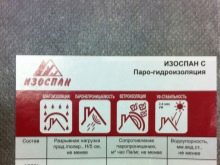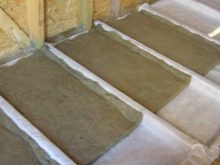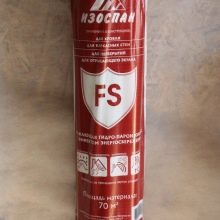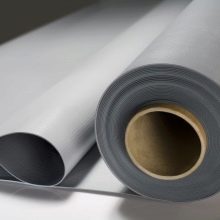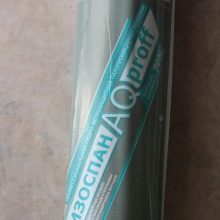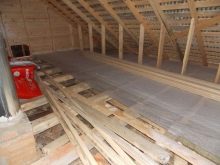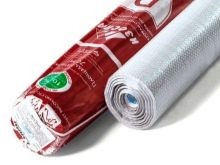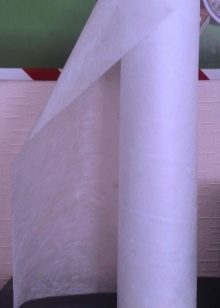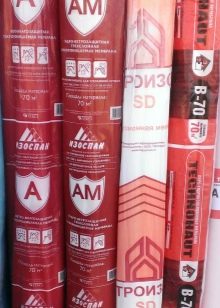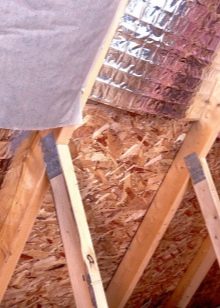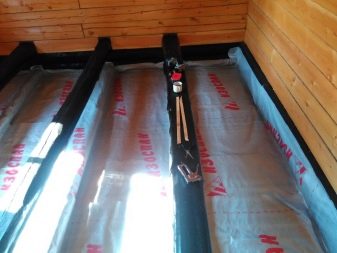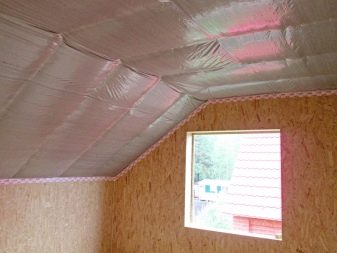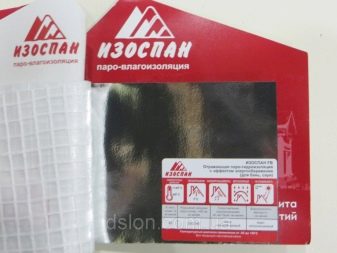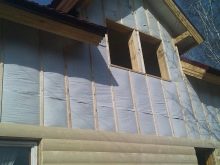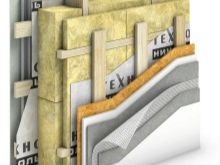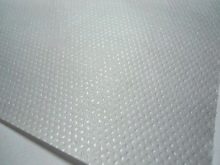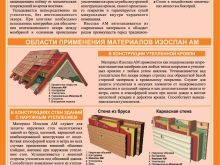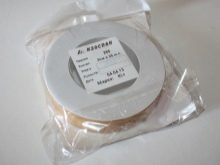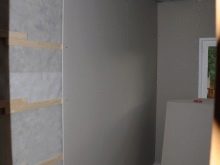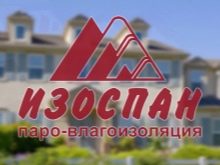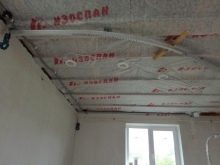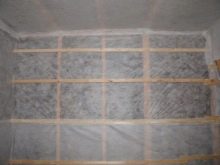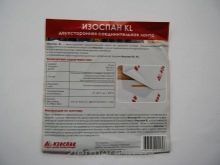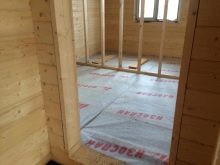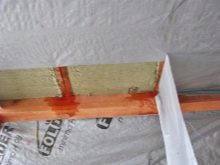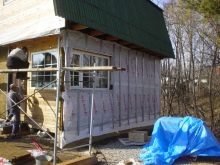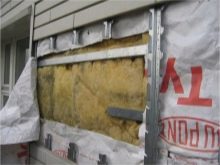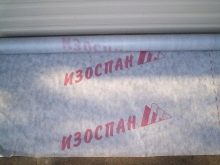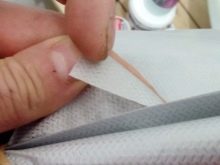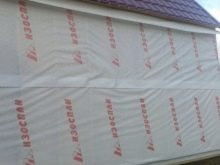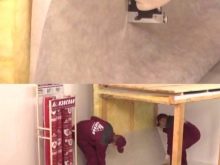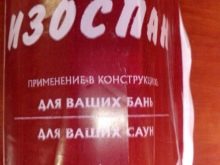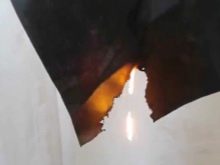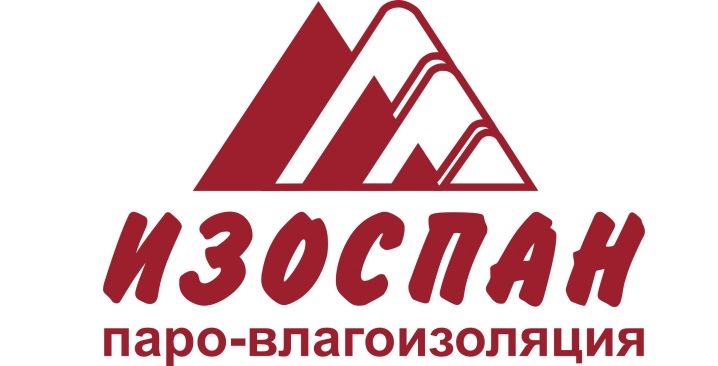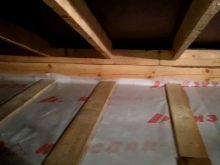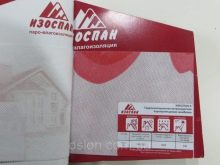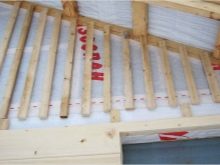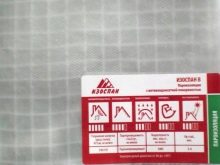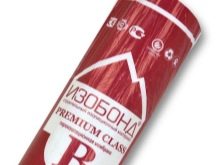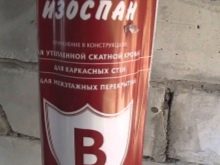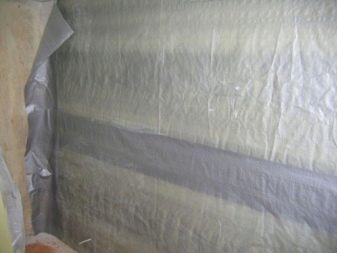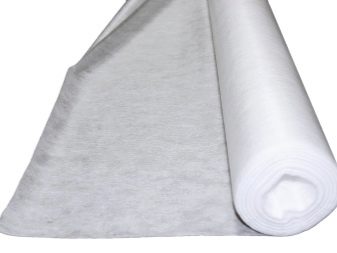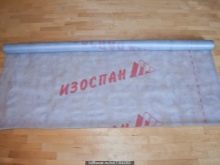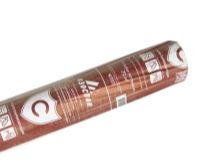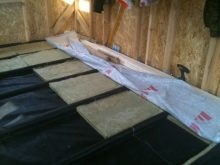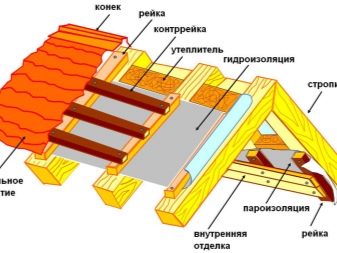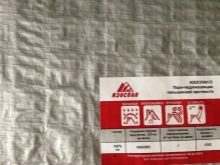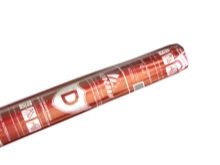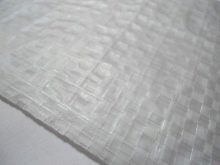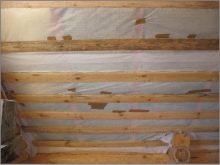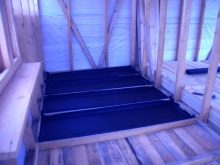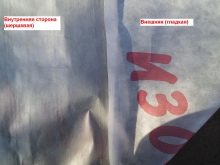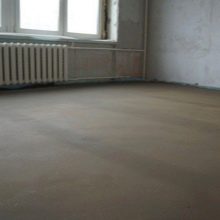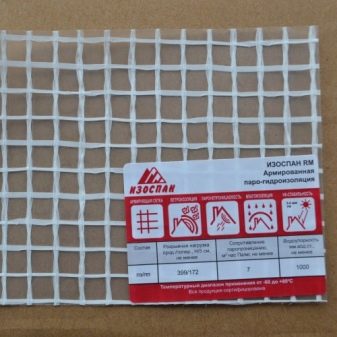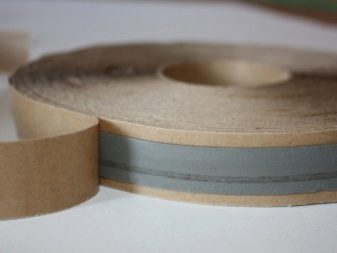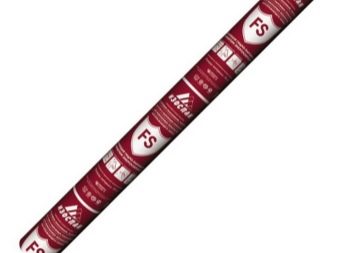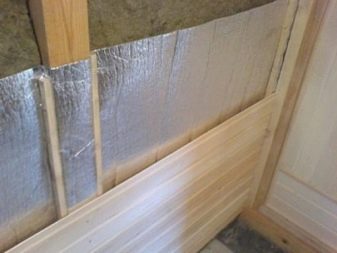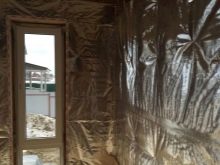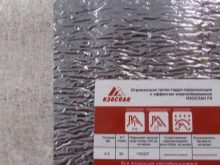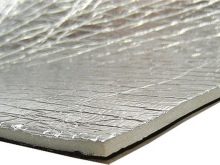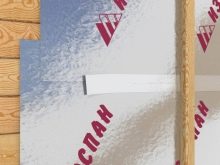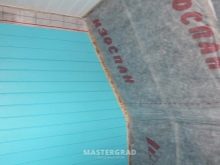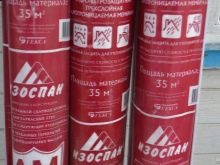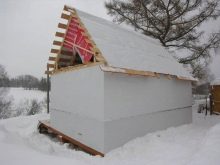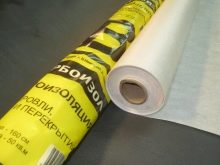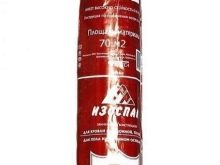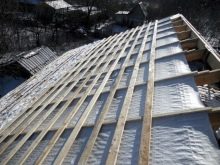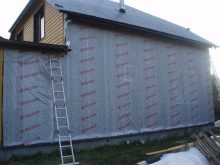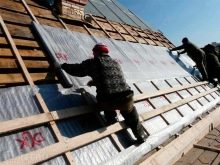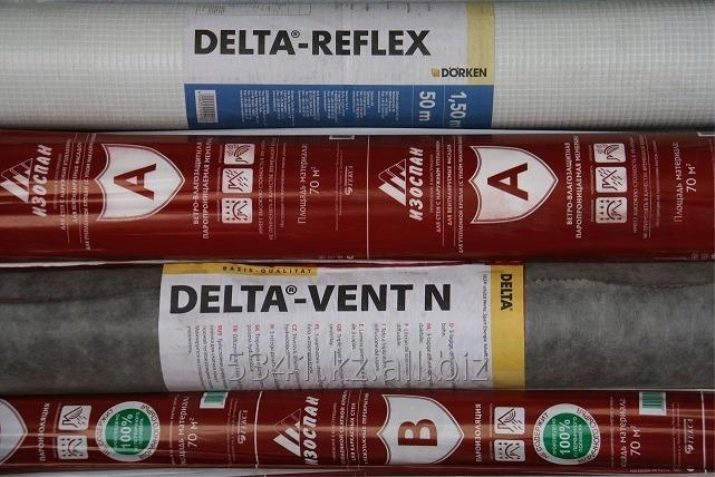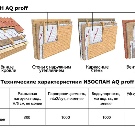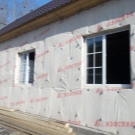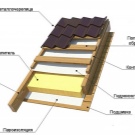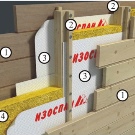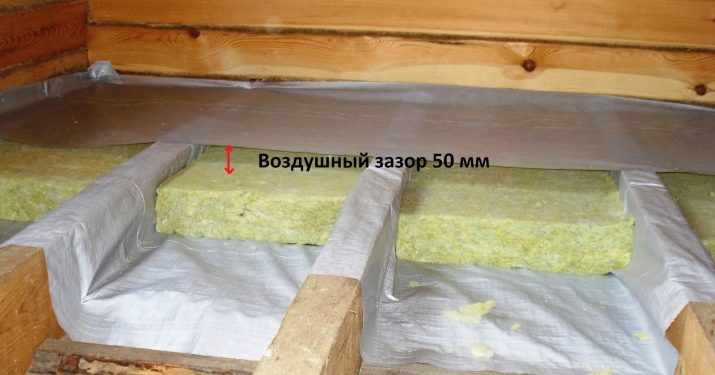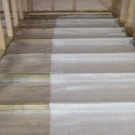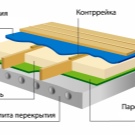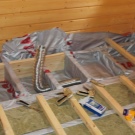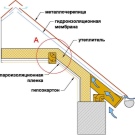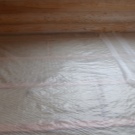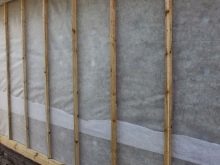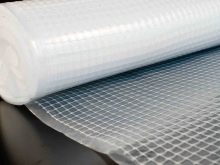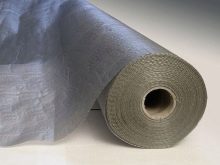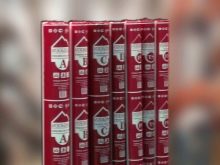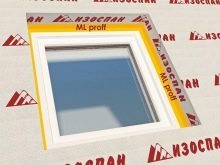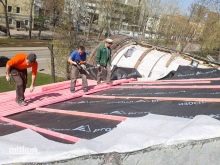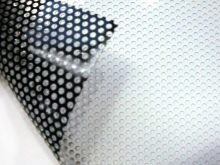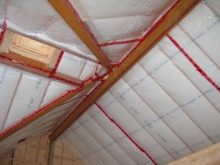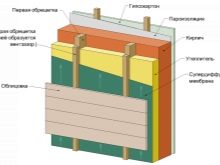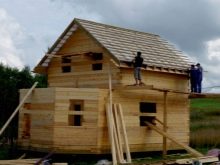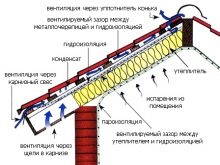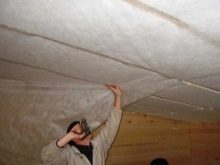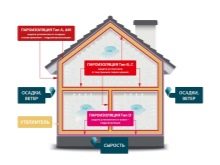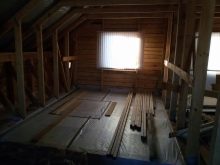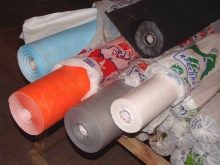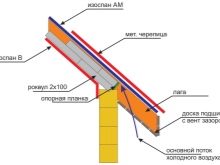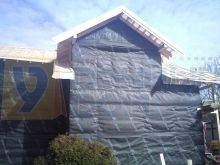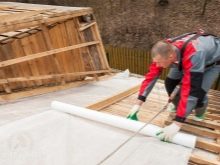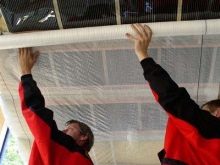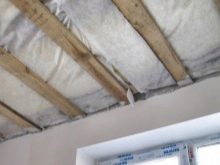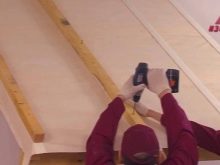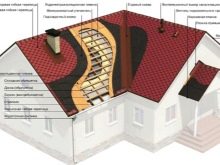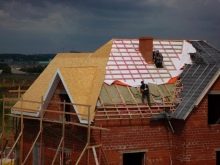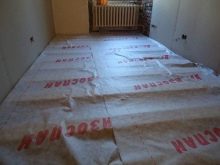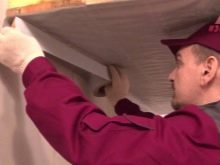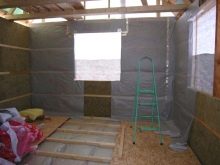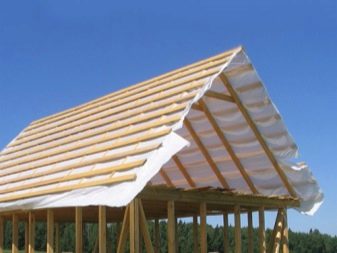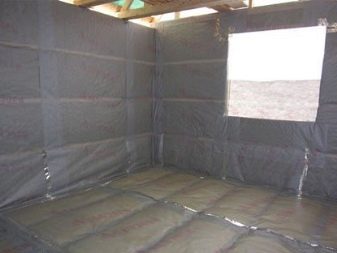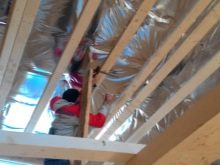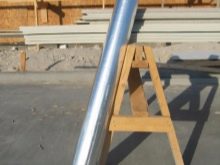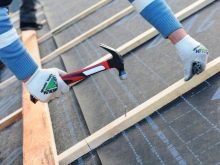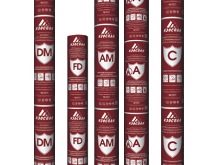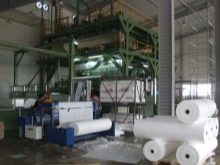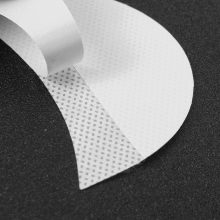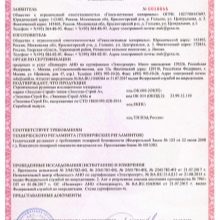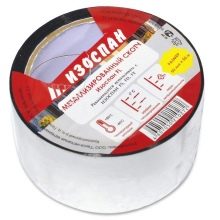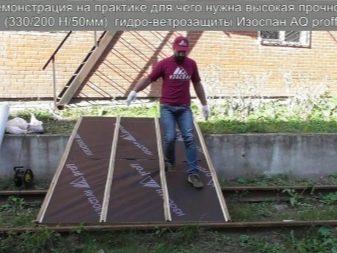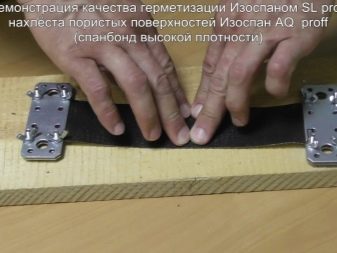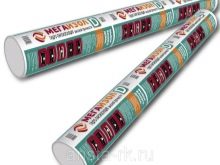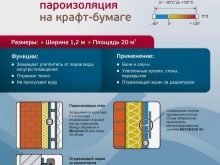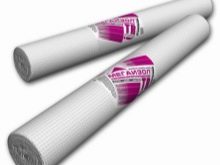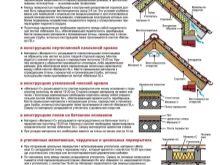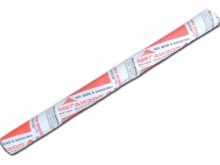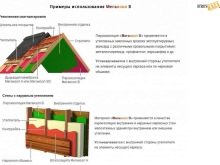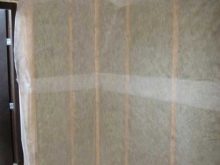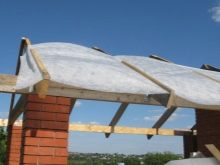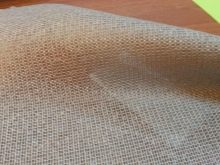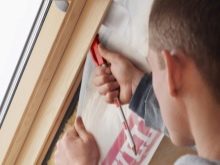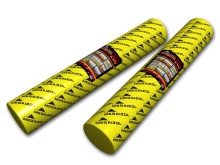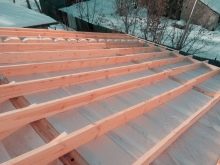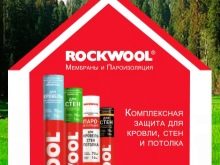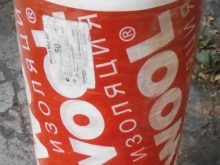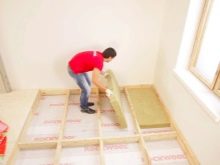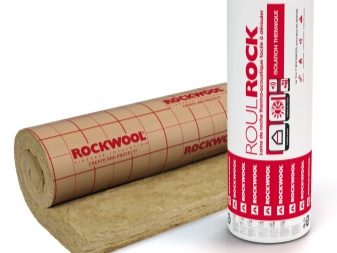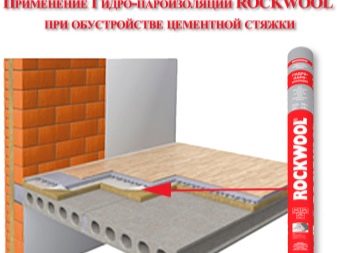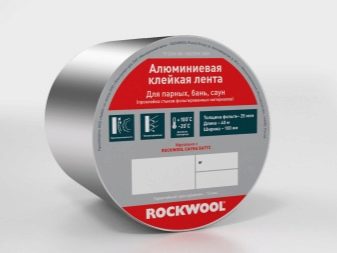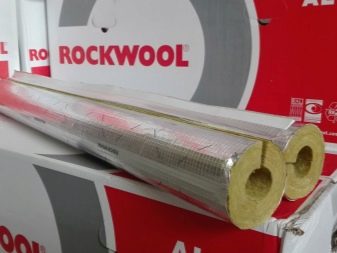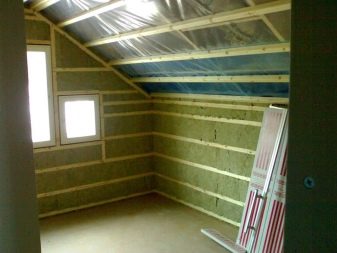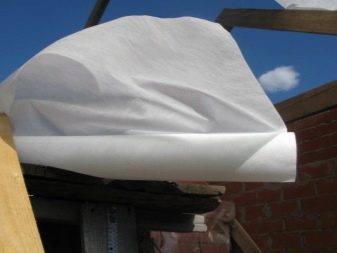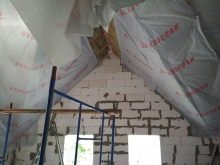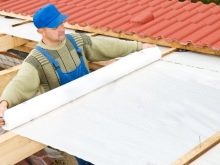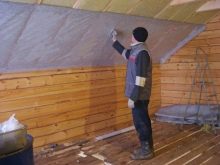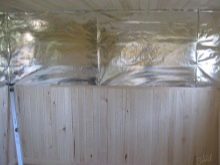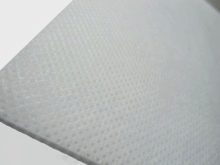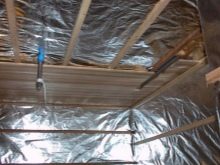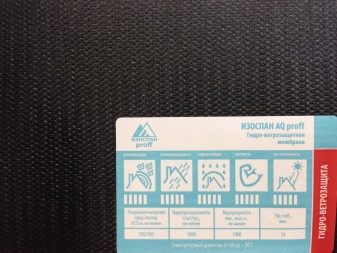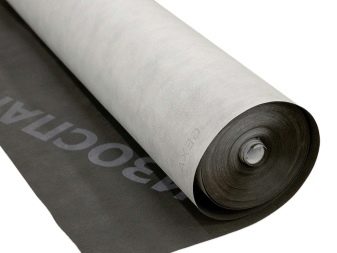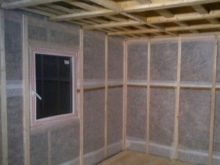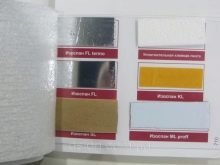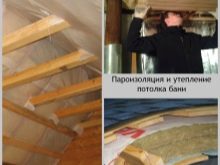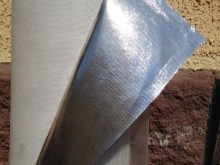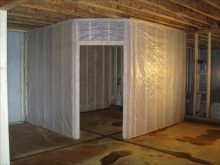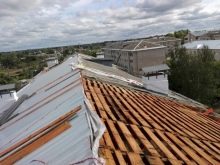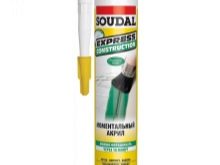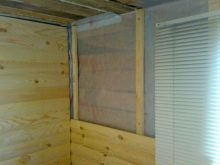Izospan: types, characteristics and application
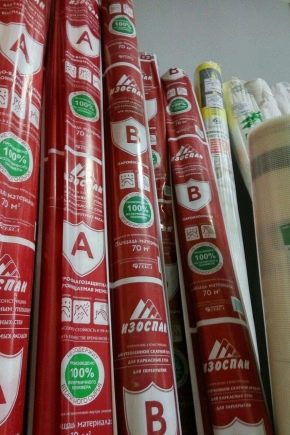
Every homeowner wants his home to be as comfortable and cozy as possible. To achieve this goal it is necessary to ensure the structure of high-quality vapor barrier. Fortunately, for this in our time has everything you need.
On the types and characteristics of the popular material called izospan, which is chosen by many owners to ensure the vapor barrier at home, will be discussed in this article.
What it is?
Izospan is a special insulating coating in the form of a film. Such material is acquired in order to preserve the original characteristics of the thermal insulation of the house throughout its entire life cycle.
Modern buildings are hard to imagine without additional insulation materials.It can be a covering from popular mineral wool, penoplex, expanded polystyrene and many other types of heaters. Most of them just need additional vapor barrier.
Today, izospan is rightfully recognized as a prominent representative of the best-quality Russian-made vapor insulators. That is why it is very popular and has a good reputation among consumers.
Special features
High-quality vapor barrier is needed in every home. For this, many reliable and efficient materials are sold in stores. These include izospan. This film coating perfectly protects various designs from steam and moisture. Thanks to such additions, the buildings not only become warmer and more comfortable, but also durable.
With the use of isospan, base materials are reliably isolated from the penetration of moisture and moisture, which have a detrimental effect on most surfaces. Thus, the life of the house increases significantly. Moreover, in the process of operation, a steam-insulated building practically does not cause any trouble and does not require special attention.
Today, there are many varieties of izospan.
The choice of a suitable product primarily depends on the foundation on which you plan to lay the film. It can be not only wall ceilings, but also roofing and other bases.
Today in the shops can be found paroizoliruyuschy material with various additives. The most popular products are flame retardant.. They are safer because they do not burn and do not support the flame.
A feature of izospan is that it belongs to the universal vapor-insulating materials.
It can be used to isolate residential spaces, and for garages, and for attic.
Such a vapor barrier material is able to protect metal structures of the house from corrosion. As for the basics of wood, their izospan protects against cracking, rotting and the appearance of fungus / mold.
In addition, this material is designed to reflect the air flow, thereby protecting the space from the appearance of drafts.
Izospan, like any other vapor barrier material, has its own strengths and weaknesses. Let's start with a good one and see the advantages of such a popular insulator:
- Izospan is a moisture-proof material, therefore it has a long service life, regardless of the climatic conditions in which the housing is located.
- This material is durable. It is not so easy to spoil. However, this does not mean that it cannot be damaged during the installation process. In any case, work with this insulator should be carefully and carefully.
- Izospan differs in the increased elasticity therefore it easily keeps within on the various bases.
- This coating protects the house and insulation not only from moisture and moisture, but also from aggressive sunlight. Many materials under their influence are subject to destruction or deformation.
- This material boasts low thermal conductivity.
- As well as isospan is able to protect the living space from the penetration of cold winds, which is especially important at the appropriate time of year.
- This material not only retains heat in the interior of the house, but also reflects it.
- Such a vapor barrier material is also good because it withstands high pressure without problems.
- Izospan is a durable material. Its life expectancy is on average 50 years.
- This coating retains its useful qualities at temperatures from minus 60 to plus 80 degrees.
- This vapor barrier film effectively protects both wood and metal substrates.
- To install izospan do not need to have a special education or extensive experience in such work. According to experts, the installation of this vapor barrier is quite simple, so an inexperienced home master can easily cope with it.
- Izospan, as a rule, has an affordable price.
- Izospan is an environmentally friendly and safe material. It does not emit harmful and hazardous substances, even if there is hot weather outside the window.
- This material does not cause allergic reactions in households.
Due to the large number of advantages, izospan has become a very popular material. Today, many homeowners are turning to it.
However, this heat insulator has its drawbacks:
- Standard izospan, which is not supplemented with special components, cannot boast of good fire resistance. When working with such a film is necessary to stay away from open sources of fire.
- Despite the high strength claimed by manufacturers, some consumers claim that izospan is quite easily torn and burst during installation. Of course, in this case, much depends on the quality of the product and the integrity of its manufacturer.
As you can see, the disadvantages of izospan are much less than the advantages.
In order not to encounter the poor quality of the purchased goods, experts advise buying this vapor barrier material in checked outlets.
Kinds
A vapor barrier such as izospan today is represented by several varieties. They have different technical characteristics and fit on different bases.
Isospan A membrane
This membrane is designed to protect insulation and supporting structures from the destructive under-roof condensate. This material is not afraid of precipitation or strong gusts of wind. Homeowners who have chosen such a membrane for vapor barrier, as a rule, are satisfied with it.
This material is ideal for fitting sloped roofs (any type of structure can be used). Izospan A needs to be mounted from the outside of a heater.
Installation of such a membrane is quite possible to do it yourself. For fixing the vapor barrier in this case most often use laths and nails. However, it must be ensured that during the installation the isospan is not in contact with the insulation. Otherwise, its beneficial properties may significantly deteriorate.
Izospan B
Izospan V is no less effective and in demand. It serves as a reliable barrier to the path of water vapor that forms inside the living space.
This variety of isospan has many positive qualities:
- Izospan B is very durable.
- Insulation protected by izospan, will remain dry in all situations due to the reliability of the vapor barrier.
- This type of vapor barrier material is universal. It can be used on almost any basis.
- Isospan B is practical.
- This material is environmentally friendly.
- Easy to install.
- It is fireproof.
Isospan B is characterized by a special structure, which contributes to the removal of accumulated condensate. In addition, this material is not susceptible to the formation of fungus and mold, while leaving the insulating layer completely dry.
Izospan C
In many ways similar to the material of class B.It is distinguished by excellent strength characteristics and high efficiency. Because of this, this material is more expensive than the above options. A characteristic feature of isospan C is the double structure.
It is laid on such grounds as:
- flat roof;
- not warmed roof of an inclined construction;
- wooden floors;
- frame walls;
- concrete floors.
When laying this material on the slopes of the roofs, it is necessary to do an overlap of 15 cm. All work needs to be done moving upwards. At the same time, the joints should be closed with a special tape, which will later be added to the slats.
Izospan D
It is a high-tech and modern material with excellent hydro and vapor insulation characteristics. In addition, this coating has a high density. It can be considered a woven polypropylene canvas with a special two-layer structure.
Izospan D differs from other types of vapor-insulating materials in that it seamlessly transfers the mechanical external influences to which it is subjected during its installation. And also such a coating is not afraid of impressive snow accumulations in the winter season.
Izospan D is used for waterproofing cattle non-insulated roofs. In addition, this material is ideal for protecting structures made of wood.
The popularity of this type of isospan is also due to the fact that it successfully protects its foundations from rain, snow and other precipitation.
This vapor barrier material is laid on the following surfaces:
- floors with a concrete base;
- flat roof;
- inclined roof;
- floor cap.
AS
This vapor barrier material is a three-layer polypropylene membrane. Most often, this coating is used to protect both wall and roof foundations from the penetration of damp and moisture from the outside.
AM
This diffusion form of isospan is universal. It is a membrane consisting of two layers. More often, a similar insulator is used to protect the insulation and the constituent roofing elements from destructive weathering, and the accumulation of condensate.
It should be noted that this material should be placed directly on the insulating layer. It does not necessarily leave the ventilation gaps.
Izospan A with flame retardant components (OZD)
This variety of isospan is particularly popular because it is recognized as safer and more wear resistant. This material will not suffer in the process of welding or work using a blowtorch.
RS, RM
These varieties of isospan appeared on the market relatively recently. They are a reinforced polypropylene film. Such products are resistant to wear and mechanical damage. Their tensile strength is 41.3 and 39.3 kg / 5 cm.
Izospan RS is often used for the installation of high-quality concrete screed. But also this material is perfect for paroizolirovanii pitched and flat roof, as well as wall ceilings.
In similar works, it is permissible to use a new one. RM marked material. Such izospan is in great demand, since it is not afraid of ultraviolet rays due to the special components in the composition. In addition, over time, the useful properties of this material do not lose their relevance, which speaks of its durability and reliability.
With different marking
Izospan is subdivided into other types of materials. These include films marked FB, FX, FL, FD, KL. These coatings not only effectively protect insulants from condensate that is dangerous for them, wind and temperature drops, but also make a considerable contribution to the level of energy savingthat many homeowners who have opted for these films have noted.
The main advantage of such coatings is that they do not let steam through their structure at all.
They are recommended to be mounted only in those rooms where there is a forced ventilation system. And also the previously listed materials are used as warm linings for underfloor heating and wall screens with heating radiators.
Izospan with different markings has a different level of mechanical strength. The maximum indicator in this case is 80 kg / 5 cm. This indicator is typical for such a coating as izospan FD. Following this material, follow films labeled FB, FS and FX (35, 30, and 17.6 kg / 5 cm).
Concerning izospana FD and FS, these varieties of vapor barrier material are made from double polypropylene film. In them, one side is metallized (foiled), and the second - performs the function of the main reflector.
FL Termo izospan enjoys enviable demand today.. This coating consists of aluminum foil, adhesive layer and siliconized paper.
The installation of this material is recommended to make in conditions of temperature not lower than +5 degrees.
In addition, at the time of installation in the room should be maintained normal humidity. Izospan FL Termo is permissible to install in spaces with high levels of humidity, for example, in swimming pools, baths and saunas. In such conditions, this material will not undergo deformation, but it will perfectly cope with its main tasks. Thanks to him, the ceiling, the ceiling or the floor do not sweat, and also do not rot.
Other material underlies production izospana fx. In this case, foamed polyethylene is used, covered with a metallized film and having a thickness of 2-5 mm.
In such a coating as izospan FB (otherwise, this material is called a foil for the bath), as the basis serves a special Kraft paper, in which one of the sides is laminated with metallized lavsan.
All of the above varieties of isospan have the same thermal infrared reflectance.This figure is 90%.
Dimensions
Currently, izospan is a popular material that is found in most hardware stores. This vapor barrier coating is available in a variety of sizes.
So, the dimensions for the material with marking A have the values:
- the width of the roll of such an insulator may be 1.4 or 1.6 m;
- roll area - 70 square meters. m;
- material length - 43.75 m;
- density - 93 g / m²;
- thickness - 0.45 mm;
- weight per roll - 7.70 kg.
Indicators of materials labeled B are:
- Isospan B roll width is 1.4 m;
- roll area - 70 square meters. m;
- roll length - 50 M;
- density - 72 g / sq. m;
- thickness - 0.25 mm;
- weight in a roll - 5 kg.
Izospan brand C has the following dimensions:
- 1.4 m wide;
- roll area - 70 square meters. m;
- roll length - 43, 75 m;
- density - 90 g / m2;
- thickness - 0.25 mm;
- weight per roll - 6.65 kg;
Isospan D parameters:
- roll width - 1.4 m;
- area - 70 square meters. m;
- length - 50 meters per roll;
- density - 106 g / m2;
- thickness - 0.15 mm;
- weight - 7, 70 kg.
How to choose?
The choice of a suitable izospan should be approached as responsibly as possible, since the life of the foundation on which you lay it will directly depend on it.
Let us consider in more detail what should be taken into account when selecting this vapor barrier material.
Pay attention to the main purpose of the material, as well as for what reasons it is best suited:
- Thus, the material of grade A is ideal for vapor barrier facades and frame foundations;
- AM isospan can be used for exterior work, frame foundations, attic floors and roofing foundations of the inclined type;
- AS material may be used for the same purpose as AM;
- Grade A with refractory additives is used in the design of ventilated facades;
- izospan In can be stacked on frame designs, garret and socle overlappings, interfloor partitions;
- if you need to paroizolirovat inclined roof, you can put the brand B Izospan;
- Class D steam insulator is used to protect concrete walls and floors, non-insulated flat and sloping roofs, as well as basement floors;
- materials with RM and RS markings are suitable for sloping / flat insulated (and non-insulated) roofs, all types of floors, concrete floors;
- Izospan DM should be purchased if you need to paroizolirovat roof (flat / inclined, with insulation and without), all types of floors, interior and frame walls.
Choosing the right material should be directly dependent on the basis for which you are purchasing it. As a rule, the marking of isospan is indicated on the original packaging.
If you are afraid to make a mistake in choosing the right product, then you should contact the sales consultants.
Before buying, be sure to check the integrity of the packaging. If it is torn somewhere, then it is better not to risk it and refuse to purchase such a product.
Experts strongly recommend buying only high-quality vapor barrier materials from well-known and popular manufacturers. Do not look for too cheap coverage in questionable retail outlets and shops. In such places, izospan (as well as its analogues) is often sold for a ridiculous price, but its quality is more than doubtful. It is better to contact the company store that sells building and insulating materials. Such outlets are available in every city.
Application and method of laying
Izospan is not only effective, but also multi-tasking paroizoliruyuschim material. It is used for a variety of reasons. The main thing is to choose the right product suitable labeling.
Let's take a closer look at how this coating can be applied, and how to lay it correctly.
First you need to figure out what are the general rules for installing such a vapor barrier:
- Before starting work, be sure to carefully study the original packaging with izospan. It should contain important recommendations from the manufacturer and a detailed summary.
- Note that the vapor barrier material should fit as closely as possible to the base. If we are talking about isolating corners, then there must necessarily be a small indent.
- Both woven and non-woven fabrics should be laid with an overlap of at least 15 cm.
- Around the perimeter of the vapor barrier should be secured with a construction stapler. Places where the joints are located should be glued with a special metallized adhesive tape.
- If you are installing metalized materials, then you should take into account that they always fit the shiny side into the room. These films are stacked end to end. For their attachment, you can use a special adhesive tape.
- In the case of installing a two-layer vapor barrier, you need to lay it on the smooth side to the insulation, and the rough side - inside the room. If you paroizoliruete floor, then the pattern of installation - the reverse.
Knowledge of the general rules will allow the master to avoid many questions and problems associated with proper installation of steam and waterproofing.
Next, we consider in detail how to lay the most popular and popular materials.
Isospaning A
This vapor barrier material should be laid on top of the insulation. At the same time, it is necessary to ensure that the inner side of the film is as close as possible to the insulation, and the outer side leaves a small gap between the vapor barrier and the skin.
Material marked Class A must be laid upwards. In this case, we can not forget about the overlap. During installation, izospan must be fixed with high-quality adhesive tape.
If you purchased this material for vapor barrier roofing base, then it should be rolled along all the rafters and thermal insulation layer. The installation of izospan should occur in this direction from the bottom edge to the ridge.
When the installation of the vapor barrier is completed, you will need to fix the crate above.
Instructions for use of isospan with AM marking are similar.
Izospan B
No less popular today is the brand B. izospan. Let us consider in more detail how to lay it on one or another basis:
- Such a film should be mounted on a rough base - plating or rafters. In this case, the material should be directed smooth side to the insulation. All formed joints should be closed sealing tape - so you will save a layer from the appearance of cracks.
- Next on the vapor barrier material you need to install metal profiles. Instead, it is permissible to use ordinary wooden slats. It is recommended to choose items with a size - 40x50 mm.
- After that, you can proceed to the installation of finishing material. It must be laid on installed rails or metal parts. At this stage it is necessary to take into account that there should be a small gap between the finish and the vapor barrier.
If you are laying izospan for vapor insulation of the floor, then the material with the marking B should be laid on a cement or concrete screed.
Izospan C, D
Izospan with markings C and D is used in certain cases:
- It is suitable for flooring on an unheated pitched roof.At the same time the vapor barrier is installed on rafters starting from the lowest point. The overlap should be at least 15 cm. In this case, fixation with the use of a counter rail is mandatory.
- If you paroizoliruete flat roof, the canvas should be laid directly on the base. This may be floor slabs and other resistant surfaces. Overlap with this installation is required and must be from 20 cm.
- With the isolation of the basement floors, Isospan is attached at the bottom. For this most often used construction stapler, but instead it is permissible to use and wooden slats.
- When arranging a concrete floor, the vapor barrier must also be laid directly onto the base.
Laying isospan is quite possible with your own hands. The main thing is to use quality materials and tools. Of course, if you are afraid to get involved in such works, then you should entrust them to professionals so as not to harm the acquired vapor barrier.
Famous manufacturers and reviews
Experts advise buying only those paroizoliruyuschie materials that are released well-known and reputable manufacturers.Thus, you can avoid the purchase of low-quality and unreliable vapor barrier materials.
At the moment, there are several large manufacturers on the market, whose vapor-insulating products are in great demand. We will get to know them better, and also consider what feedback consumers leave about their products.
Hexa Nonwovens LLC
Of course, the most popular is the brand of the same name "Izospan", referring to LLC "Hex-non-woven materials". This large manufacturer has been producing high-quality and reliable coatings since 2001. During its existence, the proprietary vapor barrier "Izospan" managed to achieve the location of both professionals and simple home craftsmen.
The firm “Izospan”, which in many respects is ahead of foreign insulators (for example, Italian), is produced at its own production base owned by LLC “Hexa-nonwoven materials”, which is located in the Tver region. During the manufacturing process, the vapor barrier material undergoes a number of quality checks to ensure flawless products.
This manufacturer is distinguished by a rather large range. Today, Hexa-Nonwovens LLC is engaged in the production of not only high-quality and sought-after izospana, but also reliable connecting and sealing tapes with self-adhesive bases.
Most of the reviews on Izospan branded products are positive. Homeowners claim that their homes are well protected from wind and moisture after installing such a vapor barrier. And also not to mention that styling many home craftsmen seemed pretty simple and fast.
Consumers did not notice serious shortcomings in the products from Izospan, however, these materials seemed to some people expensive.
Megaizol
If you are looking for materials on the shelves of stores that can be used instead of izospan, then you should look for products from the well-known company AspectSnab, which offers modern and reliable Megaizol vapor insulation, as well as geotextiles and membrane materials of excellent quality to the choice of modern consumers.
Megaizol products are a good alternative to izospan.
Its main advantages include:
- affordable cost;
- excellent vapor barrier properties;
- absolute safety and environmental friendliness;
- ease of installation.
Megaizol products can be used in roofs, walls and floors.
Many consumers were satisfied with the vapor barrier materials from this manufacturer. They note their low cost, as well as fairly light weight (hence the trouble-free transportation). In addition, this material is not uncommon - it can be found in almost any store.
Of course, buyers noticed the disadvantages of the vapor barrier from Megaizol. For example, some people thought that it was problematic for this material to determine where it was smooth and where it was rough, which interfered with the installation work.
Rockwool
Rockwool is another well-known Russian manufacturer whose products are an excellent alternative to branded izospana from Hexa Non-Wovens. This company is known not only for high-quality vapor barrier coatings, but also for aluminum adhesive tapes, seals and insulation materials.
The vapor barrier from Rockwool is popular with modern consumers, as it has good quality and effectively protects insulation from the ingress of condensate.Also, buyers have noticed that with the use of materials from this company in the house has become much cozier and more comfortable.
People did not notice serious shortcomings in Rockwool thermal insulation coatings.
Tips
- You can use not only izospan itself for vapor barrier insulation of a dwelling, but also its successful counterpart - Rockwool. This material is permissible to apply to the decoration of roofs, walls and ceilings. This coating also has 2 sides - smooth and rough. Rockwool is sold in rolls and in many ways is similar to izospan.
- When choosing Isospan, it is necessary to make sure that the material has all the necessary quality certificates and complies with GOST.
- If you are going to lay izospan on the roof, then you should do it at a slight angle of 35 degrees.
- Most varieties of isospan should not be in contact with the insulation during installation. However, if we are talking about installing Isospan C, then in this case the film, on the contrary, should fit as closely as possible to the insulation with a smooth side.
- When laying isospan on wooden structures, it must be remembered that the wood requires pretreatment with anti-fungal compounds.It will protect the natural material from mold and mildew.
- If you want to purchase both inexpensive and easy-to-install material, then you will be fit with Ispospace labeled B. It can also be used for arranging insulated roofing and ceilings located between floors. Another characteristic feature of this material is that it prevents the penetration of particles of insulation into the interior of the room.
- If you want to paroizolirovat roof, and its design is complex, then experts advise to turn to the high-tech and modern type of isospan - AQ Proff. It is a special three-layer membrane belonging to the professional category.
- When laying it is very important to put a vapor barrier sheet correctly. The reflective part should “look” inside the living space.
- When buying a vapor-insulating material, you need to pay attention to its density. So, coatings with a density of 105 g / m2. can safely withstand significant snow loads in the winter season.
- Vapor barrier must be laid under any roofing materials.Thus, it is permissible to lay under isopospace under profiled sheeting, but it is recommended to install it on a crate in which there is a short distance between the bars.
- For the vapor barrier of the floor before laying laminate is recommended to use isospan FX, whose thickness is 2 mm. This material must be placed on a perfectly flat, prepared base with the shiny part facing up.
- When installing isospan, it is necessary to ensure that it is not too tight. Otherwise, the material just breaks. However, izospan should not sag, as this can lead to the fact that under the force of the wind it will make noise and clap.
- Some people mistakenly believe that izospan can be left on the roof as a topcoat. Of course, this material is absolutely not designed for such use. Without a roof, izospan, located outside, will simply fail.
- If during installation you accidentally damaged izospan, and a hole appeared on it, then it must be repaired. Most masters advise to use for this a reliable sealant, special glue or strong double-sided tape.
How to install izospan on the pitched roof, see the next video.
